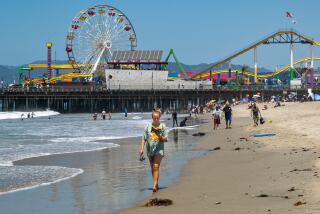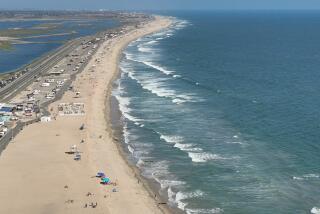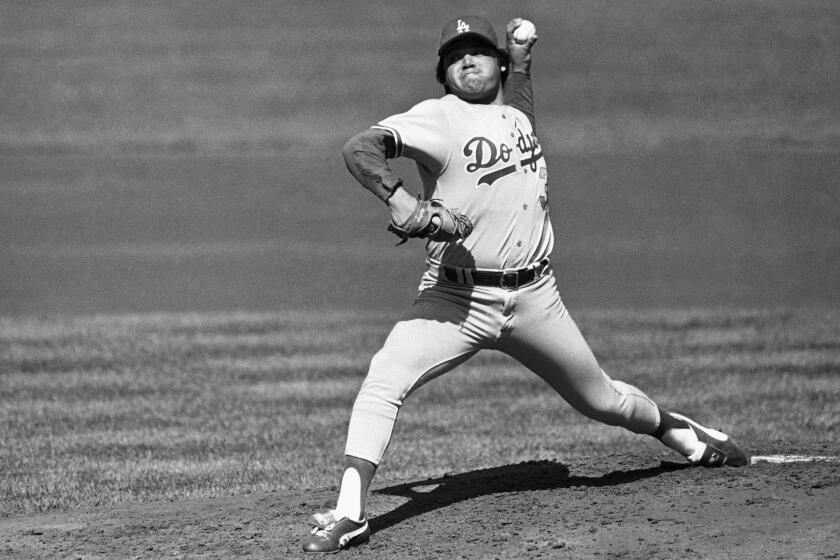Beaches look like trash dumps after multiple storms in Southern California
Recent storms may have given Los Angeles a fresh feeling, but all that rainwater has to go somewhere.
Everything you can imagine — from plastic bottles and cans to blankets, pillows and mattresses — has been funneled through the riverbeds of Los Angeles and Orange counties and dumped on the area’s beaches.
Trash from the San Gabriel River flowed to an opening near Seal Beach, creating a half-mile-long berm of detritus 20 feet wide and nearly 3 feet high. The Santa Ana River has deposited garbage at both Huntington Beach and Newport Beach. And the 51-mile-long Los Angeles River, which flows from the western end of the San Fernando Valley in the Santa Susana Mountains to the city of Long Beach, routinely dumps tons of trash on the shores of Long Beach Harbor.
A break in the storms Monday allowed beach cleaners to assess the damage and start the cleanup process. By Thursday, volunteers at Seal Beach had made considerable progress, pushing the trash into large mounds, ready for bulldozers and front-end loaders to scoop it into big dump trucks and cart it off to the landfill, said Greg Fellers, 72, a board member with Save Our Beach.
Volunteers with the environmental group sweep the beaches once a month. But because of the excess debris dumped by a series of winter storms, additional cleanup work is needed, Fellers said.
Refuse always piles up on beaches after storms, but in his 10 years of service, Fellers said, he has never seen it this bad. Recent storms have scattered rain — and snow — across California and helped fill up the state’s reservoirs.
But the rain’s side effects are less appealing.
“It was disgusting,” Fellers said of the mounds at Seal Beach. “It looked like a landfill.”
Some of the rubbish comes from as far as the foothills of the San Gabriel Mountains, 39 miles from the shore, Fellers said.
Much of it — such as grocery carts, couches and tarps — comes from the homeless population near Los Angeles and Orange counties’ riverbeds, he said.
It typically takes a day or two to clean up the mess at area beaches. This time, though, the effort will continue into the weekend. And even then, it will be at least another week before the water nearest the shore clears from its current black, murky state, Fellers said.
“On a summer day, you can come down there, and it’s a nice ocean beach,” he said. “It’s hard to imagine the contrast right now. If you looked at it now, you’d never want to go into the water again.”
Trash and debris have also sunk to the ocean floor, contributing to the poor water quality.
Tony Soriano, who volunteers for the Huntington Beach and Seal Beach chapters of the Surfrider Foundation — which conducts water testing at Southern California’s beaches — said beachgoers should wait at least 72 hours after a downpour before going in the water.
“It’s medical waste, automotive waste, transmission fluid, paint, turpentine, pesticides,” he said of what can be found in the water. “People do get sick.”
Soriano said that although the biggest pieces of junk often end up on Seal Beach, the garbage also gets dumped farther south — at Huntington Beach and Newport Beach. Unlike the San Gabriel River deposits, which are channeled directly to Seal Beach, debris from the Santa Ana River is more dispersed.
When he visited Huntington Beach earlier this week, he saw smaller bits of trash, including Styrofoam bits, straws and cans. But the rubbish flows in and out with the current, so there could have been much more, he said. Even areas without a nearby river, such as Huntington Harbor, suffer from the rain runoff.
“You can’t believe what kind of stuff we find there — and there’s no river,” Soriano said.
About 120 Surfrider volunteers picked up 1,200 pounds of waste at Seal Beach during a recent cleanup. But that was before the most recent rains.
In 2017, there was a surge in the amount of trash the organization collected — 13,500 pounds compared with 7,677 pounds the year before, according to the Surfrider Foundation website. It’s perhaps no coincidence that year was the rainiest ever in the state since record-keeping began in 1895.
More rain is in the forecast, and that will probably mean more garbage at the beaches, Fellers said. Wet weather will kick back up again Friday for large swaths of the state.
The Save Our Beach group wants public works officials to come up with a more long-term plan for mitigating the pollution at its inception.
“It would take a concerted effort,” Fellers said. “Every city that has a storm-drain system ought to have a catch system — some way of catching at least the larger articles that are floating in the water to filter it out.”
Twitter: @r_valejandra
More to Read
Sign up for Essential California
The most important California stories and recommendations in your inbox every morning.
You may occasionally receive promotional content from the Los Angeles Times.











